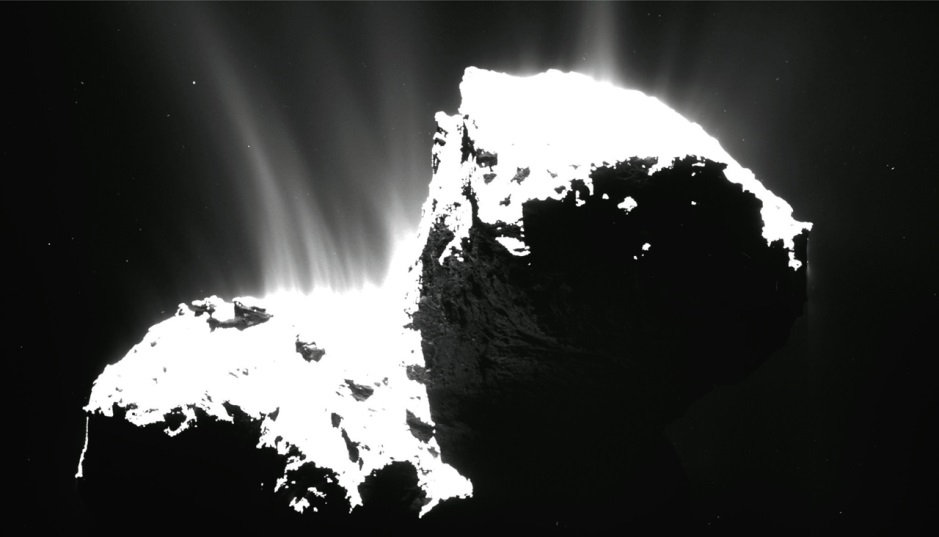Close-up pictures and precision data sent by the Rosetta spacecraft orbiting comet 67P Churyumov-Gerasimenko which it caught after a 10-year chase, look marked to radically change our understanding of these celestial objects.
Findings of the Rosetta team published in Science present a picture of astonishing variations in the surface topography and chemical composition of 67P. Astronomers have identified no less than 19 distinct regions on the four-kilometer-long duck-shaped comet.
The hi-res images Rosetta has sent shows wave-like ripples and long grooves on the surface. These features , out of place for an object without an atmosphere, are thought to be sculpted by laterally ejected gas.
Also visible are strange areas made up of large numbers of three-meter-wide lumps with the appearance of goose pimples. Researchers think these may be lumps of material which coalesced on the comet in the process of Solar System’s formation before the Earth came into being.
Another interestinng finding is the presence of visible cracks on the “neck” of the two-lumped comet. This shows that the” head” and “body” of 67P is under tension and that two parts may eventually separate.
Rosetta’s sensors have detected signs of a set of complex molecules on the surface, which are precursors of amino acids. According to researchers who point out that these molecules, more complex than those formerly identified on other comets, could only form in extremely low temperatures, show that the comet has originated in a very distant part of the Solar System.
Stilll another surprise Rosetta provided was the variety of the gases 67P is ejecting from its warming surface. Comets are generally conceived as formed of water ice. On 67P, however, warming ice was seen to sublimate into water vapor at some places, while at others spurts were dominated by carbon dioxide and carbon monoxide.
Yet another puzzling discovery was that gas was being mostly ejected from around the “neck” of the comet, although it should be the coldest region receiving least sunlight.
Although the ejected gas is clearly visible in the images Rosetta has sent, astronomers say the activation in the comet is still weak and that gas ejection will increase a hundredfold when the comet arrives at its closest point to the sun.
Meanwhile, astronomers preserve hopes that lander Philae, which disappeared after a messy descent to the surface but nevertheless provided valuable data before its batteries ran flat, may wake up from its hibernation when the comet approaches the sun in May.
REFERENCES
- 1. Rosetta reveals a world of surprises on comet 67P, Science, 23 January 2015
- 2. Ten new Rosetta images that reveal comet 67P in all its glory, Science, 22 January 2015

